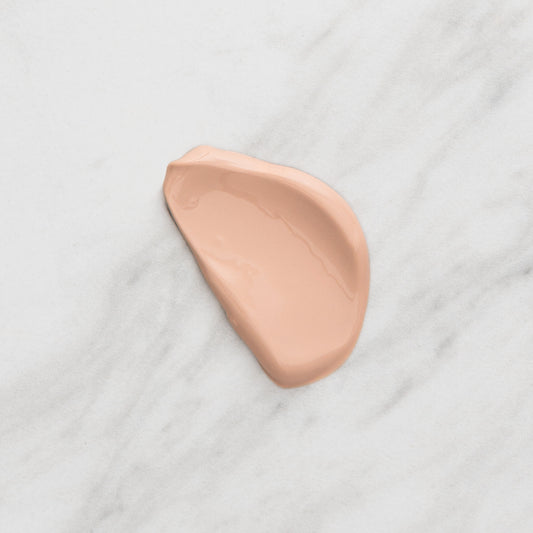
Share
The Benefits of Mineral Sunscreen for Skin Health
Understanding Mineral Sunscreen: What Sets It Apart
Mineral sunscreen, also known as physical sunscreen, is a sun protection powerhouse that relies on natural ingredients like zinc oxide and titanium dioxide. Unlike chemical sunscreens that absorb UV radiation and convert it into heat, mineral sunscreens sit on the surface of the skin and act as a shield, physically deflecting harmful UV rays. This immediate barrier makes mineral sunscreen particularly effective for quick, on-the-go application and protection.
Chemical sunscreens, by contrast, need about 15 to 20 minutes to become effective after application, as they require time to be absorbed by the skin to start working. For people with unpredictable schedules or those who need instant protection, the quick-acting nature of mineral sunscreen provides peace of mind. This immediacy is one reason why mineral sunscreens are favored by many dermatologists and skincare experts.
The Science Behind Superior Protection
When it comes to sun protection, mineral sunscreens offer broad-spectrum defense against both UVA and UVB rays. UVA rays penetrate deep into the skin, causing signs of aging like wrinkles and sunspots, while UVB rays affect the outer layer, leading to sunburn. According to the Skin Cancer Foundation, broad-spectrum protection is essential for reducing the risk of skin cancer, and mineral sunscreens excel in this area.
The effectiveness of mineral sunscreen lies in the reflective properties of zinc oxide and titanium dioxide. These minerals don't break down under sunlight, which means they retain their protective abilities longer than many chemical sunscreens, which degrade over time when exposed to the sun. Studies have shown that some chemical sunscreen ingredients, like avobenzone, can lose up to 50% of their effectiveness in less than two hours of sun exposure, necessitating frequent reapplication . In contrast, mineral sunscreens maintain their protective barrier, providing more reliable and long-lasting protection.
Both mineral and chemical sunscreens should indeed be reapplied every two hours when exposed to the sun, especially if you're sweating or swimming. The difference lies in why they need to be reapplied. Chemical sunscreens lose effectiveness not just due to physical wear but also because some of their active ingredients, like avobenzone, break down when exposed to sunlight. This degradation can significantly reduce the sunscreen's ability to protect against UV rays unless it includes stabilizers.
Mineral sunscreens, on the other hand, are made with ingredients like zinc oxide and titanium dioxide that do not degrade in sunlight. This means that while reapplication is still necessary for consistent protection, the active ingredients in mineral sunscreen remain stable. So the main point of distinction is that chemical sunscreens may lose their potency due to UV exposure, whereas mineral sunscreens typically maintain their protective properties but still need to be reapplied for full coverage.
Why Mineral Sunscreen is Ideal for Sensitive Skin
Mineral sunscreen is widely recommended for people with sensitive or reactive skin, including conditions like rosacea, eczema, or acne. Because its active ingredients—zinc oxide and titanium dioxide—are natural and less likely to cause irritation, they are gentler on the skin. In fact, zinc oxide is often used as a soothing agent in diaper rash creams, highlighting its mildness and compatibility with even the most delicate skin types.
Chemical sunscreens, on the other hand, are more likely to contain irritants such as oxybenzone and avobenzone, which are known allergens. Studies have indicated that up to 10% of the population may experience sensitivity or allergic reactions to chemical sunscreen ingredients . Furthermore, mineral sunscreens are typically free from fragrances, parabens, and other potentially irritating preservatives, making them a gentler alternative for anyone prone to skin flare-ups or allergic reactions.
Environmental Benefits of Choosing Mineral Sunscreen
Choosing mineral sunscreen isn't just about protecting your skin—it's about protecting the environment too. Chemical sunscreens frequently contain ingredients like oxybenzone and octinoxate, which have been found to contribute to coral reef bleaching. According to a study published in Environmental Health Perspectives, around 14,000 tons of sunscreen wash into the ocean each year, and the chemicals in chemical sunscreens are toxic to coral and marine life.
In contrast, mineral sunscreens are considered reef-safe because they lack these harmful chemicals. Hawaii, Palau, and parts of Mexico have even banned the sale of sunscreens containing certain chemical UV filters due to their damaging effects on marine ecosystems. By choosing mineral sunscreen, you're helping to preserve coral reefs and marine biodiversity while safeguarding your skin.
Making the Switch: A Healthier Choice for You and the Planet
The growing body of evidence supporting mineral sunscreen’s superiority—both for skin and environmental health—makes it clear why more people are making the switch. Not only does it offer immediate, broad-spectrum protection that doesn’t degrade in sunlight, but it also caters to sensitive skin and aligns with eco-conscious values. Whether you're looking to prevent premature aging, avoid irritation, or protect our oceans, mineral sunscreen is the better choice.
In short, mineral sunscreens are the ultimate multi-tasker: instant protection, fewer irritants, and a smaller environmental footprint. So next time you reach for sun protection, make it a mineral-based formula and feel confident knowing you're doing right by your skin—and the planet.




